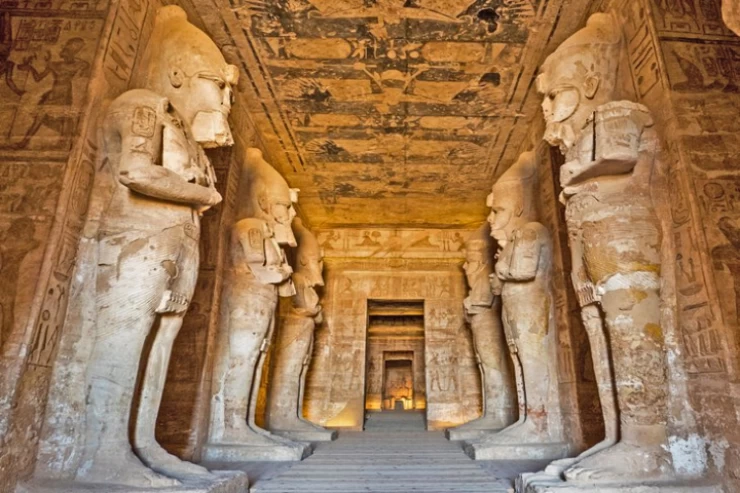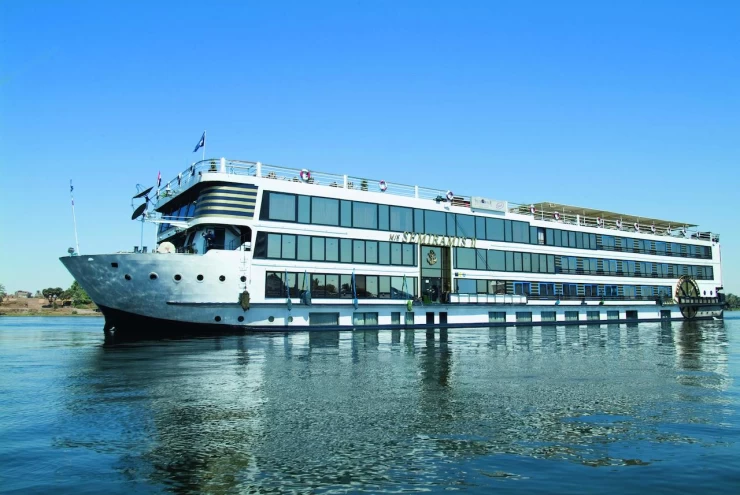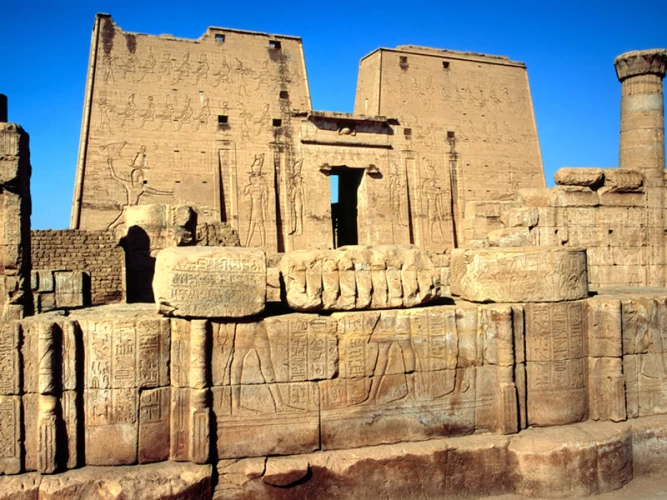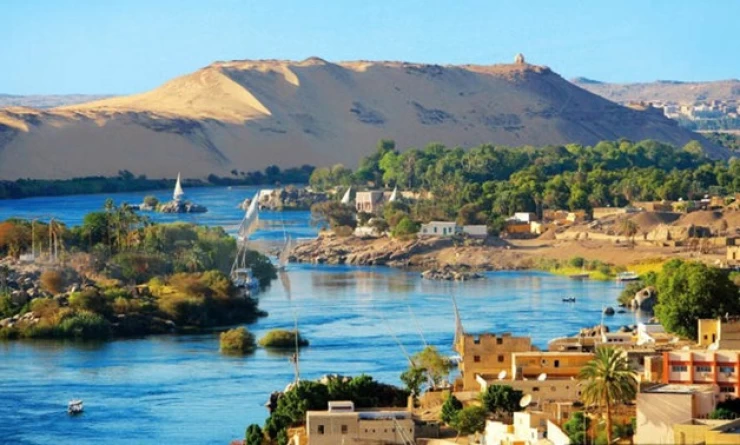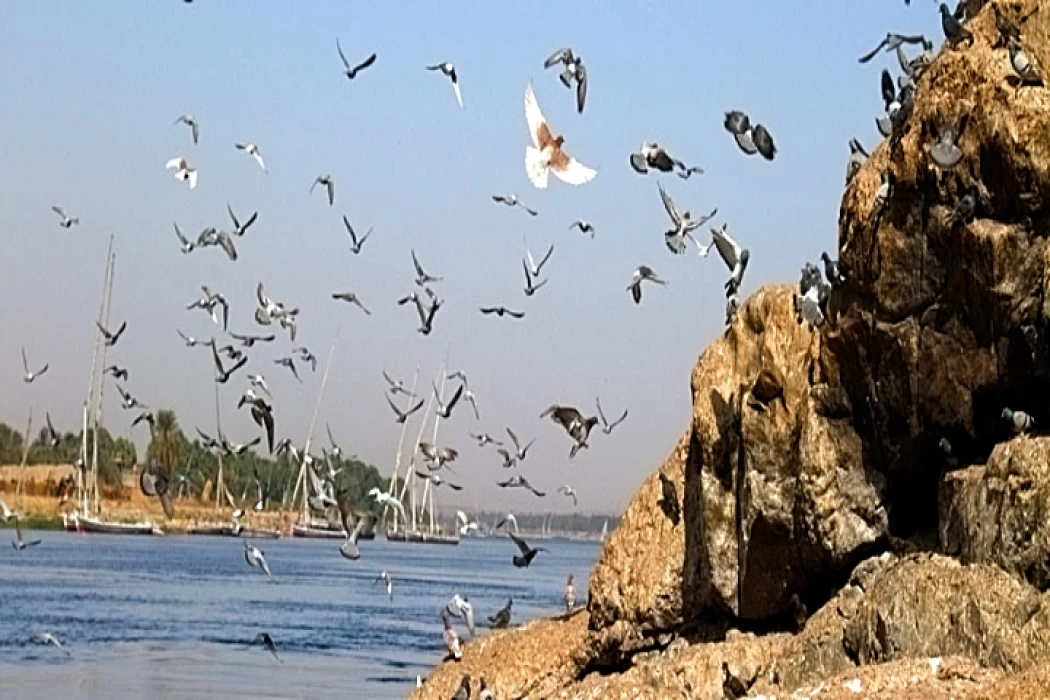
Aswan Tourism
Aswan Tours is one of the most attractive Egypt Classic Tours for people from around the world and from various cultures. When you reach Aswan, be ready to visit different destinations like the following:
Philae Temple in Aswan
The temple was built on one of the beautiful islands of the Nile River telling the story of Isis and Osiris and their eternal love and the birth of Horus. The main aim of building the temple in the third century BC was to worship the goddess: Isis, it includes antiquities from several eras, including the Greek, Roman, and Byzantine eras. Visit the Philae temple is one of the most enjoyable experiences during the Egypt Nile cruise Tours between the city of Luxor and Aswan.
Botanical Island
It includes the rarest plants in Egypt, between medicinal and aromatic, and is open for visits from 7 am to 5 pm. It provides you with a new vibe between the green fields and watching the island and the flying birds while sailing to reach the island.
The Unfinished Obelisk:
It is a huge obelisk that was found carved in granite rocks. The reason behind its name is it seems that our ancestors discovered a crack in the body of the obelisk after starting to carve it. Therefore, before completely separating it from the rock, they left it as it was. It represents one of the famous attractions of Aswan Day Tours in Egypt.
Tombs of the Nobles:
It is located on the western bank of the Nile River or "West Aswan" as the surrounding area is called, there are tombs carved in the rocks in the mountains and it’s the burial of the nobles of the society.
The Nubian Museum:
It contains some of the treasures of the ancient Nubian civilization that were saved. Unfortunately, many of which unfortunately sank under the waters of Lake Nasser during the construction of the high dam to protect Egypt from the annual flood. Therefore, the importance of the museum lies in the fact that it gives an idea of the Nubian life and its cultural and civilizational heritage. You can add it to your tour during Egypt Easter Tours to see the Nubian history.
The High Dam and the Symbol of Friendship:
It is one of the most important tourist attractions in Aswan during Egypt Christmas Tours which visitors are keen to visit during their tour of the city. This attraction is represented by the body of the High Dam, which was built during the era of President Gamal Abdel Nasser.
Therefore, the Symbol of Friendship is considered a symbol of cooperation and friendship between Egypt and Russia, which participated with Egypt in building the High Dam.
Aswan Botanical Garden
This stunning 25-acre botanical garden on Kitchener Island is home to over 400 species of plants from around the world. It offers a peaceful respite from the hustle and bustle of the city. Wander through palm groves, gaze at water lilies, and enjoy watching the many tropical birds that call it home. Don’t miss this natural oasis.
Aswan Market
The Aswan Market is a great place to buy souvenirs and experience local commerce. Here you can put your haggling skills to good use as you browse spice and perfume shops, browse Nubian handicrafts, and pick up fresh fruits and vegetables. The market has an authentic charm and offers an insight into everyday Egyptian life.
Aswan is the land of gold, the land of good people. On its land, there are many different civilizations and cultures, and its warm, stable weather is unparalleled in the winter. With all these elements and others, Aswan has become a tourist destination that attracts the attention of the world.
Enjoy a wonderful vacation in the far south of Egypt, where these places vary between cultural, historical, and recreational.
Aswan is one of the beautiful and peaceful destinations in Egypt and lies farthest in the south of the country on the River Nile. With dramatic scenic beauty, ancient history, and an actively living Nubian culture, it is the kind of retreat no traveler ever forgets.
History
Pharaonic Egypt
The importance of this region emerged during the Old Kingdom, securing the southern border. It served as a center for armies when the kings of the Middle Kingdom attempted to extend their power southward. It was particularly important in the Egyptian war to drive out the Hyksos.
Ptolemaic Egypt
During the Ptolemaic era, the island of Philae—the seat of worship of the goddess Isis—received much attention, and they completed its great temple.
Roman Egypt
During the Roman era, temples were built in the ancient Egyptian style to attract the Egyptians. Emperor Trajan built a small temple on Philae Island.
With the spread of Christianity, it became the official religion in the fifth century AD, and Egyptian temples were transformed into churches.
The Islamic Era
Islam then spread from its inception; evidence written in Kufic script dating back to the early first century AH has been found.
Aswan flourished during the Islamic era, becoming a route to Azab on the Red Sea coast in the 10th century AD, from where ships sailed to the Hijaz, Yemen, and India.
During the sixth and seventh centuries AH, it was a significant cultural hub with three schools, the oldest of which were the Aswan School, Saifiya School, and Najmiya School in Aswan.
Modern Era
Muhammad Ali established the first military school in Egypt there in 1837.
Aswan is a gateway to the most famous historical sites of Egypt. Among its prime sites is the Philae Temple, which honored goddess Isis. The temple rests on an island with the Nile in the background. However, the historical value of the temple pales in front of its scenic beauty. The glory of the temple and its legends are rekindled during the Sound and Light Show at nightfall.
The Unfinished Obelisk, another interesting site, gives credit to the awe-inspiring stone craftsmanship of the ancient Egyptians. To the north lies the Temple of Kom Ombo, a unique temple dedicated to the two gods, Sobek and Horus. Abu Simbel's stunning temples are a must-have for any visit to Aswan. These colossal monuments carved right into the mountains speak for the architectural genius of Ramesses II and stand as a testament to his reign.
In the charming south, the river differs in form and subject from its nature in any other governorate in terms of purity and color, which, along with the color of the sky, form an artistic painting created by the Creator. Therefore, the Nile in the south forces you to visit it more than once.
The Nile takes on a peaceful beauty in Aswan. A ride on a felucca on its calm waters is one of the most suitable means of taking in the natural beauty of the location, especially when the sun sets into the riverbanks.
There are contemporary marvels that add to Aswan's beauty. The Aswan High Dam is an engineering marvel that not only controls the Nile waters but also created Lake Nasser, one of the world's largest artificial lakes. You can visit lesser-known gems from here like the Kalabsha Temple, hidden by the lake shores.
In Nubia, you'll find all the comforts, tranquility, and clear weather, making it an unparalleled eco-tourism destination in the far south of Egypt. As you set foot in Nubia and its villages, you'll find Nubian houses designed in the shape of domes, in cheerful colors, overlooking the Nile... You'll find women wearing the traditional Nubian gergar, and the markets are filled with handcrafted products and eco-friendly items, just as their fathers and grandfathers did.
Some of the murals tell the story of the amazing generosity and hospitality of the Nubian people, and their refined treatment of foreigners visiting their country. Enjoy the picturesque environment in the villages overlooking the Nile River, and spend a pleasant time surrounded by pure and attractive nature, generous hospitality, and the preparation of distinctive drinks and foods unique to the Nubian people, inherited from their fathers and grandfathers.
Aswan is Nubia's cultural capital, a city that is steeped in history and tradition. You should go to a Nubian village, where you can feel the hospitality of the people, the colorfulness of their houses, and their rich heritage. Taste traditional Nubian food, hear their distinct music, and see handmade handicrafts that narrate their history. It's something that stays with you.
One of Aswan's oldest marketplaces, the old tourist market is becoming more well-known and respected over time.
It's the biggest, busiest, and most dynamic commercial market. Aswan is full of tourist and natural attractions and tourist attractions, most notably the Tourist Market Street, which includes a large number of bazaars and markets specialized in selling gifts and souvenirs that carry the traditional style of the people of Aswan, in addition to handmade products such as accessories, porcelain, and clothes, as well as leather products and antiques, and selling local products such as clothes, handicrafts, ceramic utensils, gifts and souvenirs. There are also a lot of eateries on Aswan's Tourist Market Street. This is on top of leather goods, textiles, and fragrance items.
Aswan Market is a vibrant destination where the scent of spices fills the air and the eyes are treated to local handicrafts. Explore the souk to find treasures like handcrafted jewelry, colorful Nubian fabrics, and scented hibiscus tea—a local favorite and wonderful souvenir.







